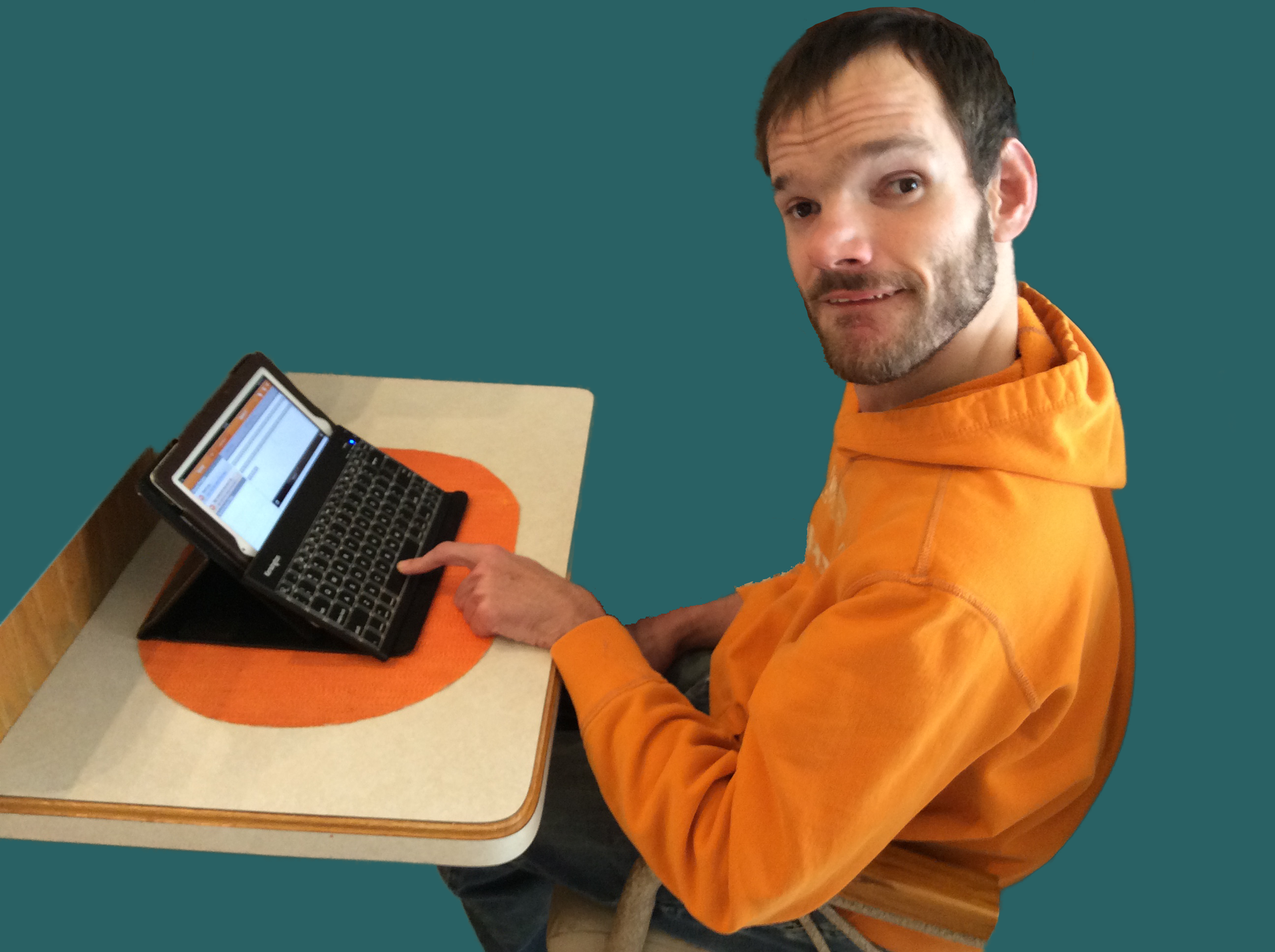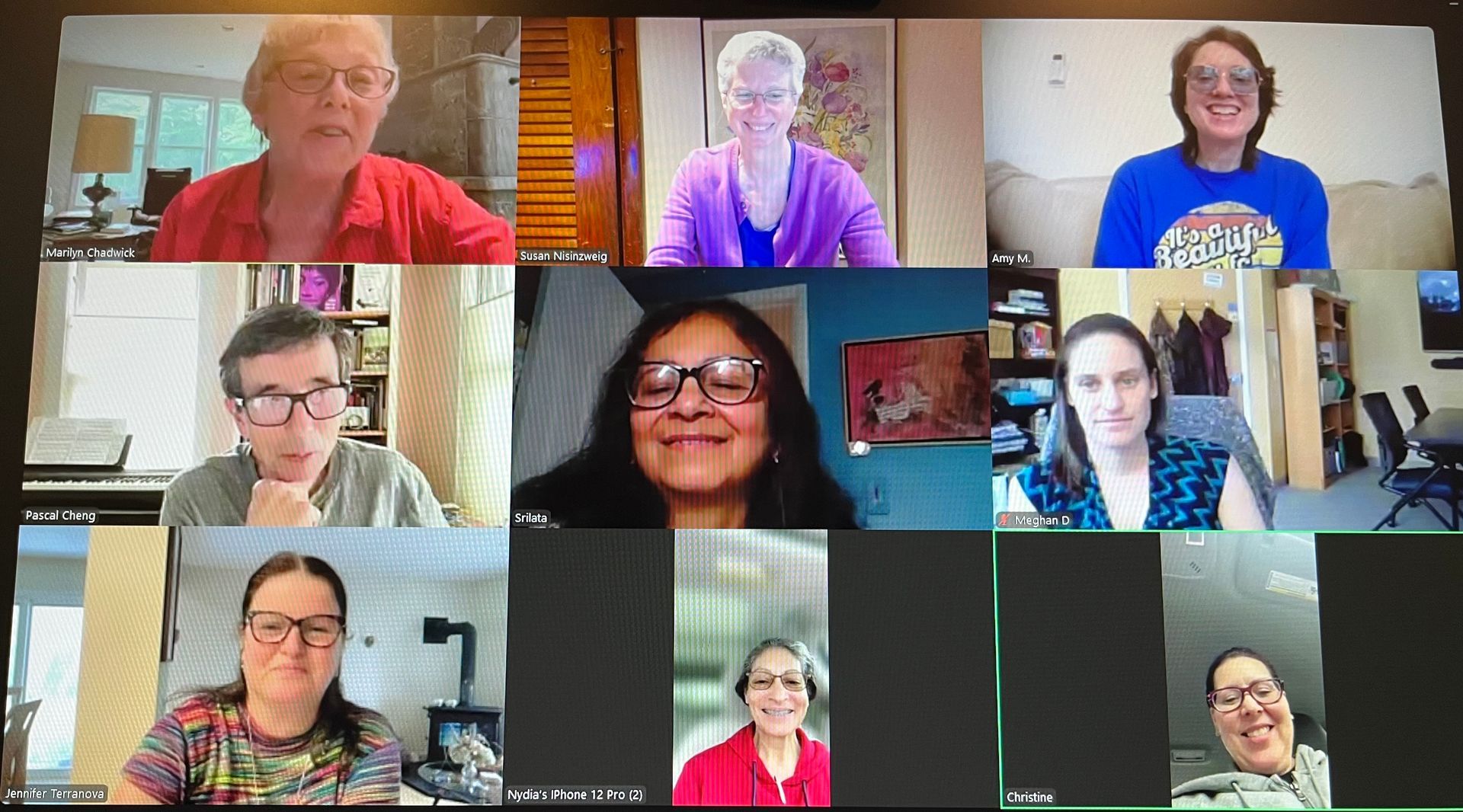Frequently Asked Questions

Are you curious and want to know more?
FAQs
What is Facilitated Communication Training?
Facilitated Communication Training (FCT) is a communication strategy where support (a backwards, resistive pull to the arm) is provided to enable a person to access a communication device and thereby communicate more effectively and reliably. As a part of AAC, FCT stands on the principle of Presuming Competence and has the goal of expanding current communication trategies and increasing a person’s ability to participate in all areas of community life.Learn MoreWho can benefit from the use of Facilitated Communication (FC)?
The use of FC can be beneficial for people who have no speech or speech that is limited or unreliable, and who have difficulty accessing a keyboard independently. It is not limited to people with specific diagnoses. It has been used successfully by people with cerebral palsy, autism and other disabilities.Learn MoreCan a person who has speech benefit from the use of Facilitated Communication (FC)?
As with other methods of AAC, FC can expand the communication of people that have limited verbal skills as well as make communication more reliable for people that have echolalia or repetitive speech. People can continue to work on improving their speech while also using FC.Learn MoreIn what situations and settings can Facilitated Communication (FC) be used?
Like other methods of Augmentative/Alternative Communication (AAC), FC can be incorporated into all areas of a person’s life, including school, home, work, community and other settings. People can use FC to do academic work, to participate in social groups, to order food and chat with friends in a restaurant, to do creative writing or to make choices and decisions in their daily life.Learn MoreWhat are the steps to becoming a Facilitator?
The training process for facilitators includes several steps:Learn More
- Participation in a training that provides background information on FC that includes what the method is, how it works, and how to support a person to use the method.
- Hands-on training from an experienced FC coach or trainer during the initial sessions of working with the FC user.
- Ongoing supervision and training from a FC coach or trainer to ensure the quality of practice and to expand the facilitator’s skills to include the fading of physical support.
- It also helps to be connected to others who use the method, either informally through social groups or formally through conferences.How does a person get started with the use of Facilitated Communication (FC)?
A person who is new to FC will often start learning to use the method by participating in a variety of structured communication activities. The framework that is used to structure activities is called a communication ladder. Early activities are highly structured and very predictable. Over time this develops toward spelling that is longer, more complex and less predictable. The goal is ‘open communication’ which is natural and highly unpredictable.Learn MoreIs there an assessment process for determining whether a person can benefit from the use of Facilitated Communication (FC)?
Benefit for FC is determined in an assessment process that describes current communication strategies, documents previous AAC systems where remediation has been tried, and valuates movement difficulties, especially as it relates to pointing to lettered targets. Also considered is whether or not the person has a circle of support ready to learn and implement the method. The assessment is typically done by an experienced practitioner or an accredited trainer. Accredited coaches can do a screening style assessment for the purpose of trialing the method with an individual.How long does it take to learn to type to communicate? How long to will it take before they can type with no physical support?
Because each person is unique, learning to type is an individualized process. It may take a considerable time to achieve success – sometimes weeks or months. A person’s motor/movement skills, the amount of practice they get in using FC and the skills and experience of their communication partners are all factors in how quickly they can progress with their skills and move towards independent communication. While some people might not be able to achieve full independence, most people can progress to needing less support over time with regular practice.What kinds of technology (both electronic and non-electronic) devices do people use when typing to communicate?
People use a variety of electronic and non-electronic boards and devices for typing to communicate. The iPad is used frequently as a device because it is flexible, portable, and cost effective when compared with other dedicated communication devices. Voice output Apps, such as iWordQ_US or iMean are available to use on the iPad and are inexpensive and simple to use. It is important to match the device used to the personal needs of the person. For example, people who have difficulty with precise movements may find it easier to type on a large Bluetooth keyboard than the regular iPad keyboard. Some people prefer to use a laminated letter board along with a device. Device choices may vary depending on the situation and location where typing is occuring.Are there best practice guidelines for the use of Facilitated Communication (FC)?
There are best practice guidelines for the use of FC. These guidelines were developed by a group of FC practitioners from around the country in 2000. The guidelines provide direction on the practice of FC, training and assessment process and the involvement of a person’s team supporting a person’s use of FC.View GuidelinesHow can a person demonstrate that they are the authors of their communication?
Authorship is the ability of a person to show that the words that they type come from them and not from their facilitators. A person can demonstrate authorship in a number of different ways, such as unique spellings or consistency across communication strategies. A portfolio approach can be used to document examples of authorship for a person. With this approach, examples of authorship are collected over time, giving a more complete picture of a person’s skills.Is there research that demonstrates the validity and effectiveness of Facilitated Communication (FC) as an Augmentative/Alternative Communication (AAC) method?
Yes, there is research that demonstrates the validity and effectiveness of FC as a communication method. It is often stated that FC has been thoroughly disproven by research but the majority of studies with negative outcomes were done in the 1990’s and used research designs that were based only on message passing tests, and often used untrained and/or unfamiliar facilitators with the typers, setting them up for failure. There have been studies done over the last 10 years with positive outcomes that have studied FC from multiple perspectives. The organization, United for Communication Choice, has compiled an annotated bibliography of studies with positive outcomes on the use of spelling/typing to communicate methods which include FC, RPM, and S2C. Being knowledgeable about these studies can help to respond to questions about FC from others who might be skeptical about the validity of the method. Link to article and to Resource page.Compilation of StudiesHow is Facilitated Communication (FC) similar to and different from Rapid Prompting Method (RPM) And Spelling to Communicate (S2C)?
FC shares many common characteristics with RPM and S2C. Both methods are built on a foundation of supporting movement and the principle of presuming competence. Both rely on prompting and different types of support to help a person develop the motor skills to point to letters on a device or letter board. Both have the goal of open-ended communication and require systematic practice to work toward that end. One of the primary differences between FC and these other methods is that people using RPM and S2C do not receive physical support when pointing or spelling and spend more time on a letter board and doing structured academic activities. People who use FC receive physical support and start out right away using electronic devices like the iPad. The immediate goal is for people to be able to communicate in their everyday life,What are the steps to becoming a Coach?
The first step to becoming a Coach is to take the Foundations training course and build the skill of being a facilitator. Ideally your experience as a facilitator would involve supporting more than one individual. You can become a Level 1 Coach in order to teach others to support one specific individual who uses the method. The Level 2 Coaches Training enables you to coach multiple Communicators and their teams. Those who enter the coaches program need to be active as Facilitators and circumstances readily available to coach others. Fill out the application to the Coach Program, found online, and submit all that is necessary for us to determine your readiness to enter the program. Once in the program you would follow the guidance of the instructors and build your skills as a coach. The Coaches Training lasts about 6 months and includes training videos, mentoring, and homework assignments. The completion of the program leads to accreditation if you are working to provide coaching to more than one individual. Accreditation places you in a unique group of Professionals, Communicators, Coaches and Trainers who are dedicated to using and teaching best practice.Learn MoreWhat are the steps to becoming a Trainer?
In order to enter the Trainer Program, one needs to demonstrate best practice as a Facilitator as well as effectiveness as a Coach. There is typically time of more than a year between completion of the Coaching Program and beginning the Trainer Program. In this time it helps to work with a variety of people who use the method and stay connected to others who are Coaches and Trainers to help build your experience as a Coach. For the Trainer Program, you need to fill out the application, provided online, in order for us to determine your readiness. Once in the program, you should follow the guidance of the instructors and build your skills of teaching others about the method through in-person and online classes. You'll also learn to complete professional assessments to prospective Communicators. The Trainer Program leads to accreditation and allows you to team up with other Trainers and Coaches to meet the needs of Communicators, Families and Organizations you work with. This program takes a year to complete and includes training classes, mentoring, and assignments.Learn More

